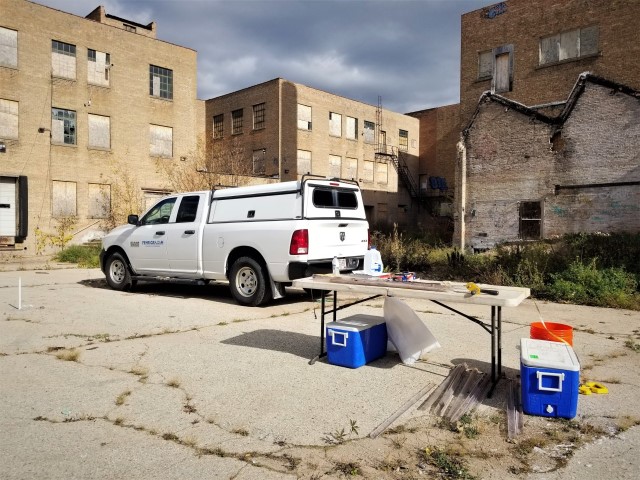What is a Phase II Environmental Site Assessment?
As a municipality or developer, you are committed to redeveloping unusable, contaminated properties in your community and transforming them into assets. Because of their history, though, these properties often require Phase II Environmental Site Assessments (ESAs) before redevelopment can begin. A significant aspect of brownfield redevelopment involves performing environmental due diligence by assessing the site's contamination level and determining the presence of any hazardous pollutants. If Recognized Environmental Conditions (RECs) are identified during a Phase I Environmental Site Assessment, a Phase II Environmental Site Assessment follows.
Phase II Environmental Site Assessment: Why, when and how
In addition to posing health risks to the neighborhood, an environmentally contaminated property can also reduce surrounding property values and become a financial liability for the community. A Phase II ESA determines the property's condition by investigating RECs discovered in Phase I.
Once an REC has been identified, the impact of contaminants on the site's subsurface — including groundwater, soil and soil gas — must be assessed. A Phase II Environmental Site Assessment enables municipalities to obtain a realistic picture of the RECs and avoid long-term cleanup costs and complex environmental liabilities.
A Phase II ESA aims to ascertain, per the ASTM E1903-11 Standard Guide, whether the presence of on-site contaminants poses significant pollution concerns or health risks. Methods for analysis include groundwater vapor intrusion analysis and drilling to sample soil and soil gas. The samples collected undergo chemical analysis to compare their contamination level against screening levels and regulatory agency standards.
The key steps of a Phase II Environmental Site Assessment are:
Reviewing site-specific data and designing scope of investigation
Every site is unique and requires a new scope of work for a Phase II Environmental Site Assessment. To design the scope of the investigation, a team of geologists and engineers review the following site-specific data:
- Chemical analysis of soil samples.
- Number of drilling locations.
- Types of drill rigs.
- Lab testing parameters.
- Local regulations and standards.
Obtaining necessary permits and conducting Phase II ESA fieldwork
Obtaining environmental drilling permits is a prerequisite for Phase II environmental fieldwork in some states and communities. Drilling permit costs and processing times should be factored into the overall budget and timeline of a Phase II environmental report. Once approved, contamination testing fieldwork should be supervised by a senior-level professional geologist and completed within the timeframe allowed by the permit.
Fieldwork for a Phase II Environmental Site Assessment involves a preliminary site visit, possible geophysical survey, utility clearance marking, drilling and sampling. Additional site visits may be needed to remove hazardous waste.
Performing technical risk assessment
To determine the level of contamination, the consolidated data compared against environmental screening levels are used to run risk assessment models and perform vapor intrusion studies. The final Phase II environmental risk assessment report provides conclusions and recommendations for the site based on the results and regulatory standards. In some states, a professional geologist or engineer is also required to certify and validate a Phase II environmental report.
Depending on the results and conclusions of a Phase II site assessment report, further work may be needed. That could include enrolling into a state voluntary cleanup program (VCP). Entering a VCP would require a formal submittal of the assessment, establishment of cleanup objectives and possible Remedial Action Plans. In some cases, active cleanup may be needed. Most state VCPs have a risk-based approach focused on how someone can eat, breathe or drink contaminants. Often, eliminating the exposure is sufficient which could be a barrier or use limitation of some kind, often called institutional controls or environmental land use controls, depending on the program.
Conducting Phase II Environmental Assessments for your community
With a limited budget for brownfield redevelopment, you may be tempted to select the low-bid consultant. Remember that hiring the wrong consultants could severely affect the quality of the ESA and result in fewer drilling locations, shallower drilling depths and less sampling. A substandard scope of work that overlooks underground anomalies and contamination could expose you to future liability.
At Fehr Graham, skilled professionals with civil engineering, structural engineering and environmental science backgrounds are committed to helping municipalities and developers make informed decisions on brownfield redevelopment. We ensure that your project is thoroughly and accurately analyzed through a highly customized Phase II Environmental Site Assessment to address the challenges of transforming brownfields in your community.
Whether you are conducting a Phase II Environmental Site Assessment or in the middle of regulatory action, Fehr Graham can help you take the next step forward in brownfield redevelopment. Contact Us to learn more about our services, or give us a call at 815.394.4700.
Collaborative, Insightful, Results-Driven Solutions
Fehr Graham provides innovative engineering and environmental solutions to help improve the lives and communities of our customers.


